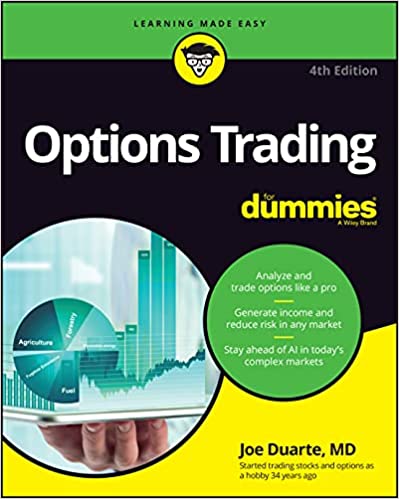Joe Duarte’s Smart Money Trading Strategy Weekly
Joe Duarte’s Smart Money Trading Strategy Weekly
By Joe Duarte Editor Joe Duarte in the Money Options
Momentum Run Unfolds. Here’s How to Prepare for when the Momentum Reverses.
Editor’s note: This week’s issue of Joe Duarte’s Smart Money Trading Strategy Weekly is being produced early due to the New Year’s holiday. Happy New Year to Everyone.
The stock market is in a classic momentum run where daily gains become commonplace and it feels as if the market can never fall again. This leads to rising levels of bullish sentiment and eventually leads to a correction.
I don’t want to rain on anyone’s parade, and would not be surprised if a strong end to the year carries well into January. But, as I look around, I see a market that needs a rest, which is why it’s a good time to review how market declines develop and unfold. Suffice it say that when the decline eventually comes the action in the bond market will likely play an important role.
How Market Declines Unfold
The year 2023 was volatile, but ended on a high note. Unfortunately, the uncertainty surrounding global geopolitics – wars, elections, deglobalization, and population migrations – combined with over the top optimism, could make for a disappointing start to 2024; once the upward momentum thrust runs its course.
As I noted in my previous post, one of my favorite sentiment indicators, the CNN Greed-Fear index recently hit a reading of of 80 (12/20/2023). Over the ensuing few days, it barely budged, moving slightly lower into the high 70’s, but remaining well entrenched in the Extreme Greed side of its range. At the very least, these types of readings reflect an investor sentiment environment which will eventually limit the market’s upside.
Other sentiment measures such as the CBOE Volatility Index (VIX, see below) and the CBOE Put/Call Ratio (CPC) have kept their cool, which is why the rally has moved higher. Any type of meaningful decline will likely be preceded by a rise in these two instruments. That’s because they both reflect a rise in pessimism.
Here’s how it works. There is always an event, inside or outside the markets which raises investor fear. If you’re looking for one in this market, think about something that leads to higher interest rates.
Fear is Central to Market Declines
When investors become fearful, they buy put options. Inside the market, this means that market makers are selling puts to put buyers. This buying and selling of puts, in turn causes a rise in put option volume which raises the Put/Call ratio and simultaneously causes VIX to move up.
Where it gets interesting, is in the fact that market makers must hedge their put sales, which are bullish bets, albeit unintended ones on the part of the market makers. The problem for the market makers is that bullish bets when the market is turning bearish are a recipe for disaster. But because market makers, who are privy to the order flow before anyone else, know beforehand that the bullish trend is turning bearish, they can prepare.
Thus, even though they are obligated to sell the puts to the public, because they know that the order flow is no longer bullish, they hedge their required put sales to put buyers via the short sale of stock index futures. It is that stock index future short selling by market makers that causes the market to fall when VIX and the CPC rise.
Moreover, when stock index futures decline, because of the market makers’ short sales, they trigger short sales from algo traders (CTAs, and hedge funds), especially when key support levels are breached. Combined, these mechanical moves by big money algo guided investors result in a market decline.
The decline picks up speed when everyone else figures out what’s happening and runs for the exit.
Stick With the Plan
When the impressive rise in stocks, which started in October, runs its course it will be obvious as the scenario I described above will unfold.
Of course, forecasting is a fool’s game. And any investor who knows a few things will tell you there is no way to know what the future holds beyond an understanding of the mechanics of any market trend. Yet, it’s always best to be prepared, which is why these basic tenets are worth repeating:
- Stick with what’s working; if a position is holding up – keep it;
- Take profits in overextended sectors;
- Consider some short term hedges;
- Look for value in out of favor areas of the market that are showing signs of life; and
- Protect your gains with sell stops and keep raising them as prices of your holdings rise.
In addition, it’s also helpful to remember that market declines will eventually lead to market rallies. And as I described in my latest Your Daily Five video, during a market decline it’s best to focus on value. Specifically, those areas of the market which hold up better than others.
For a detailed plan on portfolio preservation consider a FREE Trial to Joe Duarte in the Money Options.com.
Last Look at 2023 Bellwethers and what the Algos Are Waiting For
With the trading year winding down, it’s a good time to see how things may shape up for 2024.

As usual, the bond market is a great analytical anchor. The U.S. Ten Year Note yield (TNX) ended 2023 below the key 4% level, which as I’ve noted is an important level. Not only is it a psychologically important yield point, it’s also a place where algos are likely to set up “if this happens, do this” triggered trading programs. On the down side, the floor for TNX is 3.8%. A break above 4%, or a fall below 3.8% will likely trip mechanical trading programs which are likely to trigger related programs in stocks.

One of the algos’ favorite trading vehicles is the Invesco QQQ Trust (QQQ), whose general trend is often closely tied to the action in TNX, via related programs. QQQ is in a steadily rising upward momentum thrust, which looks sustainable in the short term.

The other algo trading favorite, the SPDR S&P 500 ETF (SPY) is in a similar trading pattern. Both are very overbought as RSI has been above 70 for several weeks. On the other hand, both ADI and OBV remain in uptrends, suggesting this trading pattern can go on for some time.

The story sector for the year, the homebuilders, as in the SPDR S&P Homebuilders ETF (XHB) is also in a positive posture, albeit in a slightly less robust posture than QQQ and SPY. As with the other two, ADI and OBV remain constructive.

For the big picture on homebuilder and real estate stocks click here. For detailed Buy and Sell recommendations on homebuilders click here.
Market Breadth Breaks Out
As I wrote last week, the NYSE Advance Decline line (NYAD), although overbought was poised for a breakout, which is unfolding, and which could extend into January.

The Nasdaq 100 Index (NDX) remains in an unfettered momentum driven uptrend; as the Fed’s bullish continues to squeeze short sellers. NDX is overbought, but ADI and OBV are rising, which means the overbought condition could increase before any consolidation.

The S&P 500 (SPX) is in a similar posture; overbought but showing no signs of slowing down.

VIX Remains Below 20
The CBOE Volatility Index (VIX) remains below 20, a bullish posture for stocks. If VIX remains subdued more upside is possible.
A rising VIX means traders are buying large volumes of put options. Rising put option volume from leads market makers to sell stock index futures to hedge their risk. A fall in VIX is bullish as it means less put option buying, and it eventually leads to call buying which causes market makers to hedge by buying stock index futures raising the odds of higher stock prices.
To get the latest up to date information on options trading, check out “Options Trading for Dummies”, now in its 4th Edition – Available Now!
#1 New Release in Options Trading
Now in Audible Audiobook Format
Options Trading for Dummies (4th Edition)  Audible Audiobook – Unabridged Audible Audiobook – Unabridged
Joe Duarte MD (Author), Terrence Kidd (Narrator), Tantor Audio (Publisher)
4.5 out of 5 stars 61 ratings
#1 New Release in Investment Analysis & Strategy
# 1 New Release on Options Trading

Good news! I’ve made my NYAD-Complexity - Chaos charts featured on my YD5 videos, and a few more available here.
Joe Duarte is a former money manager, an active trader and a widely
recognized independent stock market analyst since 1987. He is author
of eight investment books, including the best selling Trading
Options for Dummies, rated a TOP
Options Book for 2018 by Benzinga.com - now in its third edition, The
Everything Investing in your 20s and 30s and six other trading books.
Meanwhile, the U.S. Ten Year note yield (TNX) is trading in a The
Everything Investing in your 20s & 30s at Amazon and The
Everything Investing in your 20s & 30s at Barnes and Noble.
A
Washington Post Color of Money Book of the Month is now available.
To receive Joe’s exclusive stock, option, and ETF recommendations, in
your mailbox every week visit https://joeduarteinthemoneyoptions.com/secure/order_email.asp.
JoeDuarteInTheMoneyOptions.com is independently
operated and solely funded by subscriber fees. This web site and
the content provided is meant for educational purposes only and
is not a solicitation to buy or sell any securities or investments.
All sources of information are believed to be accurate, or as otherwise
stated. Dr. Duarte and the publishers, partners, and staff of joeduarteinthemoneyoptions.com
have no financial interest in any of the sources used. For independent
investment advice consult your financial advisor. The analysis
and conclusions reached on JoeDuarteInTheMoneyOptions.com are the
sole property of Dr. Joe Duarte.
| 




